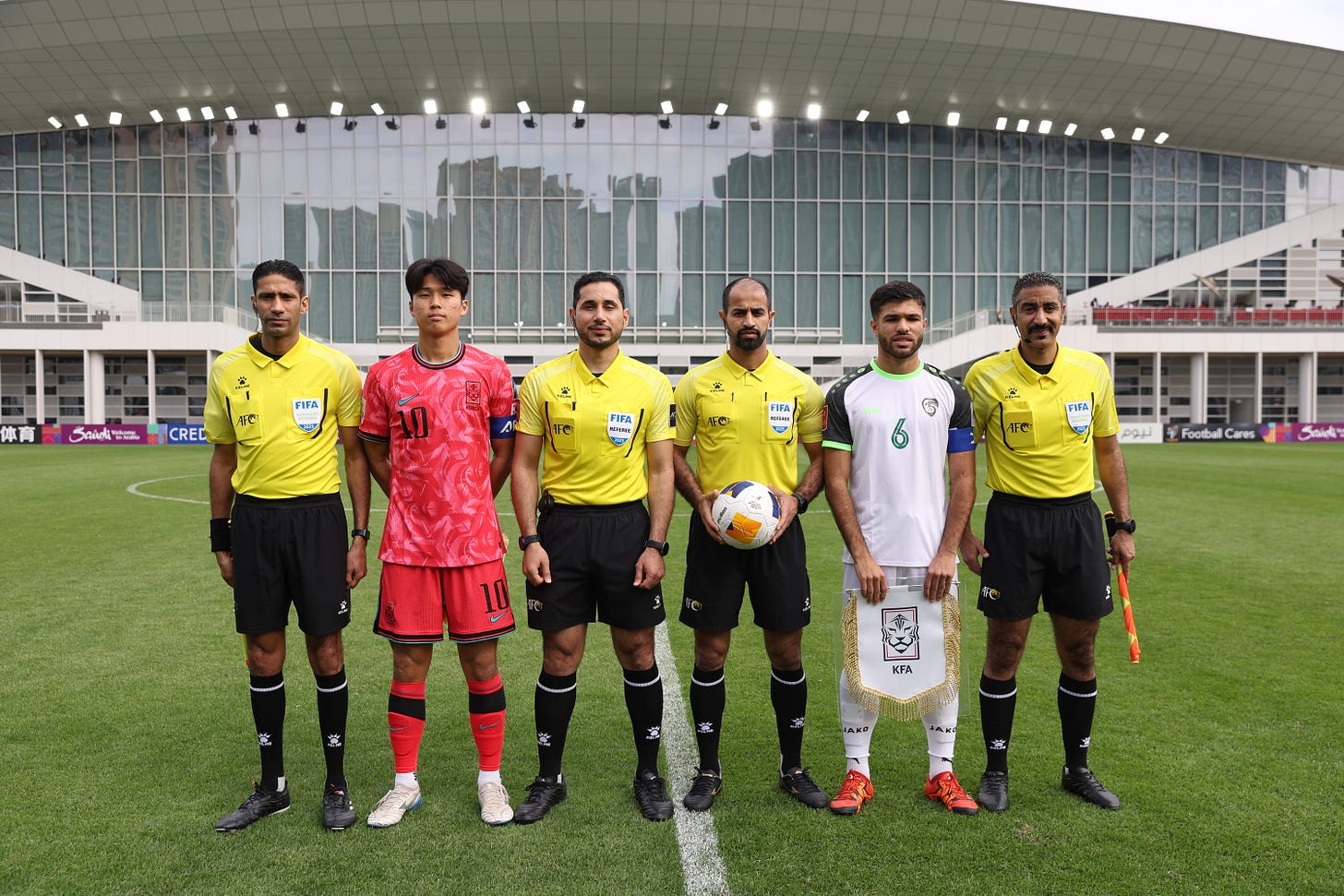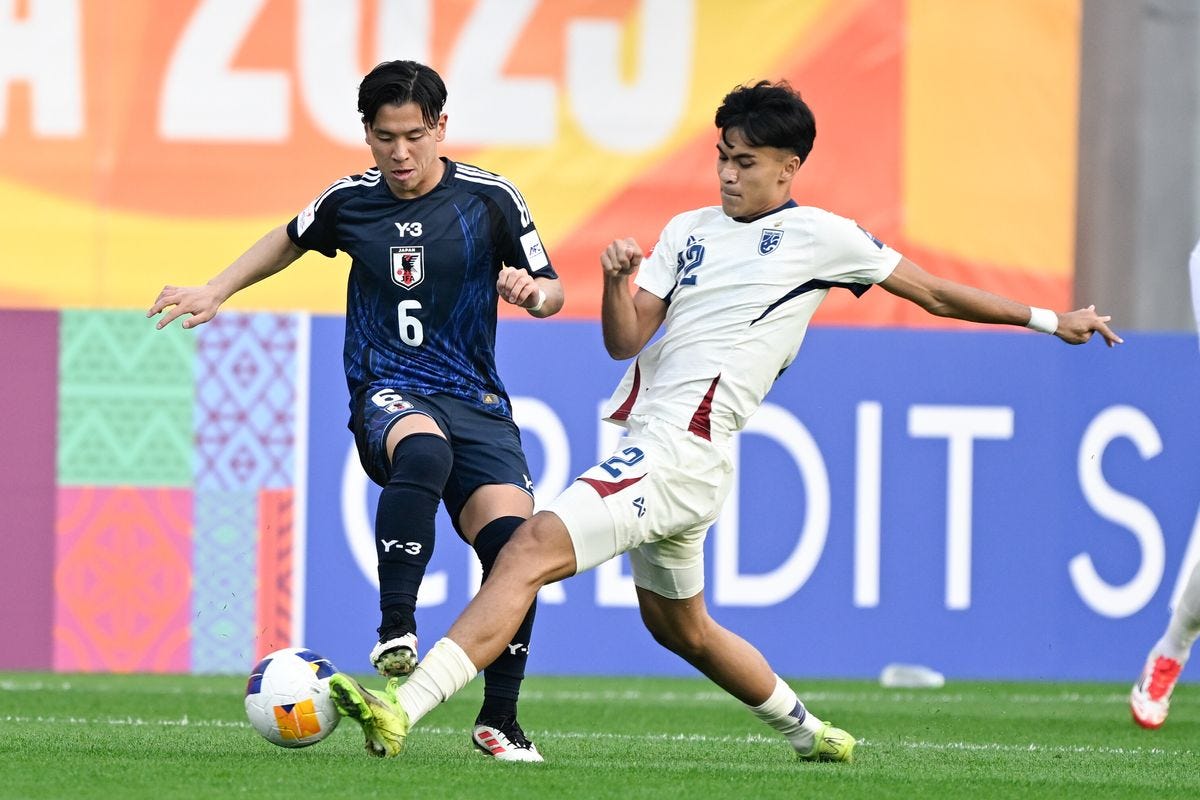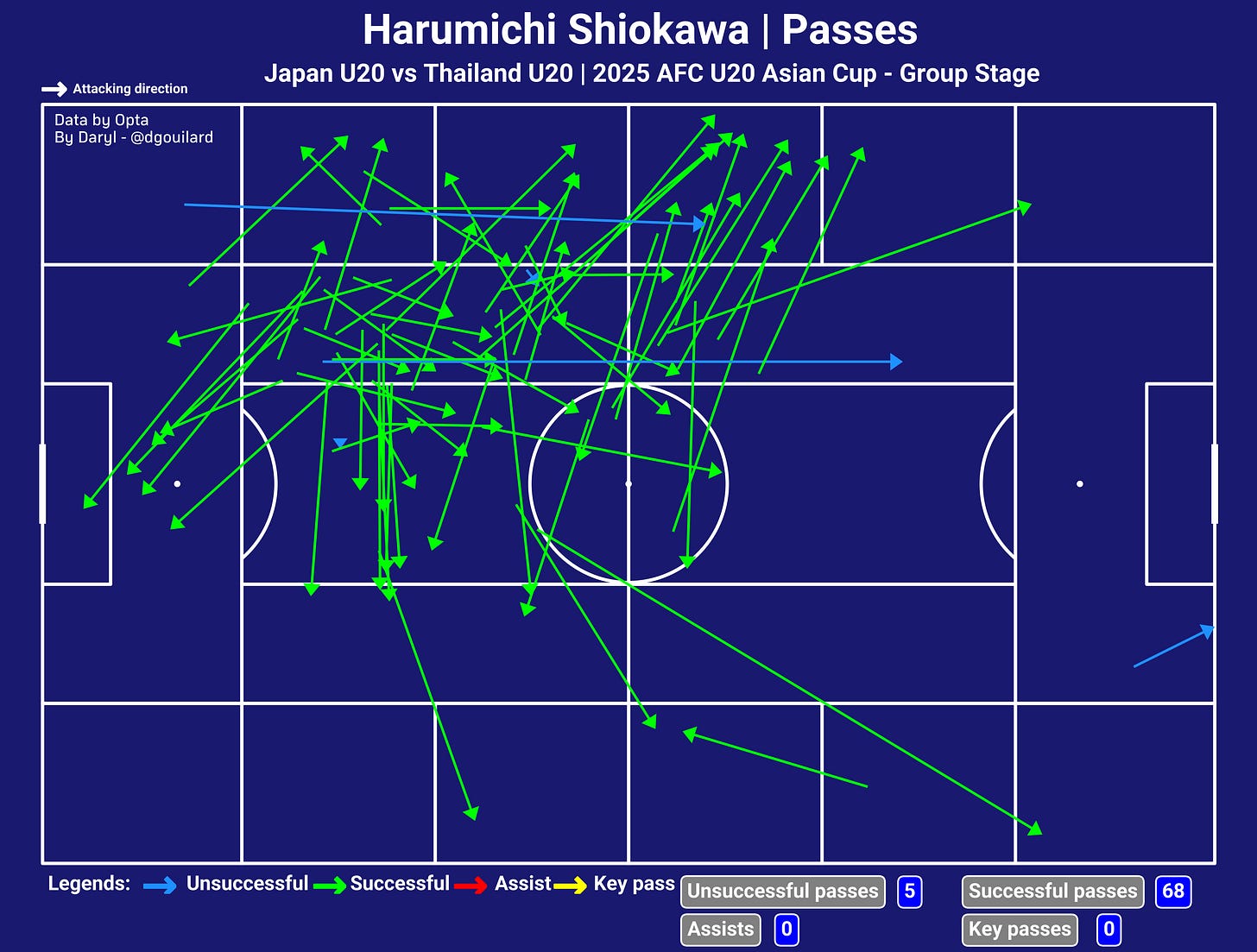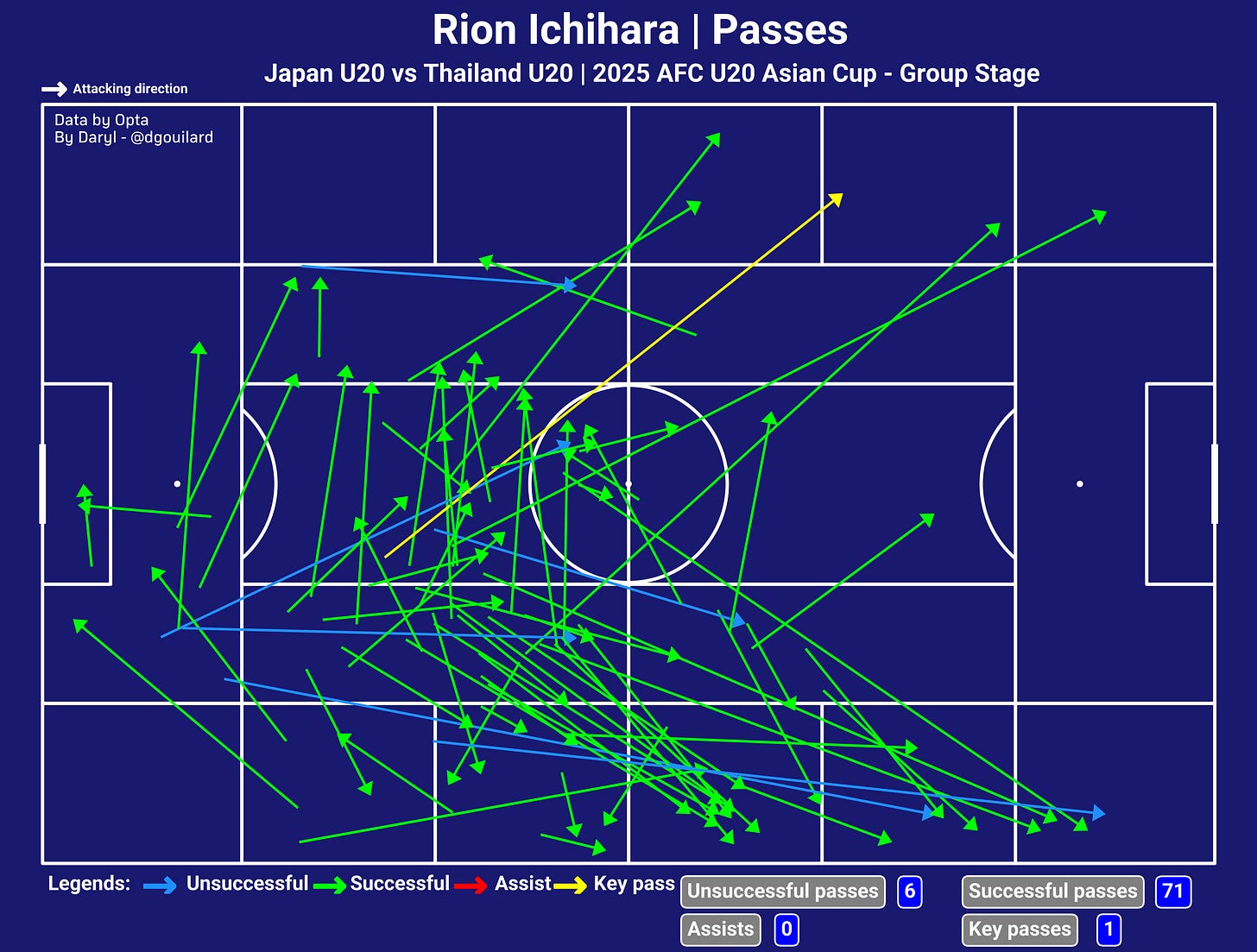Daryl's Notebook: Scouting the U20 Asian Cup (Day 3)
It is time for the big names to showcase their talents!
South Korea vs Syria
With their early dominance and a seemingly long throw tactic inside of the final third, it was not a surprised when South Korea took an early lead after a scrambling situation that led to the ball found (#8) Shin Sung, who calmly tucked the ball into the bottom right corner.
While watching South Korea played out from the back, it reminded me of how the China vs Qatar match happened on the opening day. South Korea’s build up tactic was very similar with the use of the double pivot sitting right in front of the centre-backs and one of those midfielders would drop deep to provide numbers against Syria’s front two. There was also a wing reliance from South Korea as they looked towards full-backs and wingers to attack the wide spaces and the half spaces.
Meanwhile, Syria also defended in a 4-4-2/4-2-3-1 mid block where their front two looked to put pressure on South Korea’s central midfielders. This, intentionally, gave the opposition’s centre-backs a lot of time on the ball, which they used to find more advanced players and bypassed the need of passing the ball to the central midfielders. Because South Korea’s wide players would sit in the pocket of spaces between Syria’s defensive lines, it was easy for the centre-backs to send the ball forward that way and they could use small combinations between players to progress the ball forward.
I was slightly impressed with South Korea’s #9 Ha Jeong-woo after 20 minutes of the match. Whenever he had the opportunity to control the ball, he looked quite strong by using his physicality to hold off the pressure from the opposition and waited for teammates to arrive. Off the ball, he looked to make runs in behind Syria’s backline and was encouraged to get to the end of long passes made by the centre-backs or central midfielders from deep. Sounds almost similar to China’s #9 Liu Chengyu from the opening match, actually! I have not watched much of FC Midtjylland’s Cho Gue-sung, but there was also something about Ha that reminded me of South Korea first team’s current #9, maybe it was because of his height and slim physical build.
(#8) Shin Sung himself also looked quite decent in midfield as well besides from the opening goal that he scored. Even though him being a slightly small midfield, he looked quite trickery on the ball and had the technical skills to control the ball under pressure from Syria’s defence to help his team retain possession well. He also made a few decent passes from deep as well and was seemingly a key player in South Korea’s in possession phase.
There was also left midfielder/winger (#14) Baek Min-gyu who looked quite confident in taking the opposition on whenever he had the ball. An important piece for South Korea’s left-sided attacks, he worked quite well with Shin Sung and teammates around to create small combinations among themselves for bypassing pressures from Syria’s defence. He could also be found, at times, inside the left channel where he made runs in behind to exploit the space that they created by dragging Syria’s defenders out of their positions.
Have not been called into action a lot, but South Korea’s keeper (#1) Park Sang-young looked quite decent when making passes from build-up. There were no outstanding passes that found midfielders in between the lines or anything, but he helped his side retained possession and circulated the ball well among the defenders. On occasions where he was called upon, he made decent saves with his reflexes and reach as well. Just a shame that he could not keep a clean sheet and conceded a very good goal scored by Syria’s (#8) Aland Abdi 15 minutes into the second half.
South Korea just looked very good technically and their quality helped them dominated Syria for the majority of the match. Their tactical stuff also looked quite impressive, even though they were mostly simple ideas. Cannot say this was not a well-deserved win for the South Koreans.
Some standout players at the end of the match:
South Korea U20: (#8) Shin Sung, (#14) Baek Min-gyu, (#10) Kim Tae-won, (#9) Ha Jeong-woo
Syria U20: I did not find any Syria players that impressive really :)
Japan vs Thailand
Probably the first team that I saw using a back three to play out from the back and also the first team that played with a back three as well. The use of wide centre-backs pushing forward to provide more support for the wing-backs was interesting since that allowed the midfielders to remain in the central lane and dominated the central of the pitch.
The centre-backs, particularly (#15) Harumichi Shiokawa and (#5) Rion Ichihara, also used long passes to find the striker duo who were sitting in the channels and were looking for runs in behind. (#7) Ryunosuke Sato and (#20) Rento Takaoka had good pace to get to the end of the long passes but they could also control the ball well after bringing it down and make runs into the box. There were also runs from one of the midfielders to stretch Thailand’s back four, which might have helped Sato and Takaoka quite a bit.
I have been quite impressed with (#15) Shiokawa who played in the centre of Japan’s back three after 20 minutes or so. He was a tower at the back by winning a lot of his aerial duels that came his way, but also had the pace to track back and and followed the Thai attackers who made runs in behind. He also looked quite comfortable with the ball, especially with his progressive carries and the long passes that targeted the strikers up front. I suppose the same can be said about his centre-back partner (#5) Ichihara as well since both possessed almost similar qualities.
There was also a lot of rotations happened when Japan controlled possession. When one player, either a wing-back or a striker dropped deep to receive the ball, there would be another player filled into the position that left behind, which would usually be a centre-back overlapping or a midfielder who made a run forward respectively.
Thailand have also done a bit of threat towards Japan’s goal, but with their opposition constantly fouled Thailand players to disrupt their attacks, it was hard for the Southeast Asian side to do any significant damage really.
Very interesting that Japan abandoned their 3-5-2 shape in the second half and switched to a 4-4-2 with a couple of subs made at half time. It definitely opened up more opportunities and gave the Japanese players more freedom to attack, but I thought it also came at a cost since their pressing and mid-block have not been too impressive since they allowed Thailand to play around them too easily.
With the switch to the 4-4-2, Japan also relied more on crosses into the box from their wide players along with passes in behind Thailand’s backline for the strikers. However, similar to some teams throughout the competition so far and South Korea in the match above, Japan also used small and short combinations to progress the ball out wide, with players making runs into the channels and dragging the Thai players out of their positions.
Some standout players at the end of the match:
Japan U20: (#5) Rion Ichihara, (#15) Harumichi Shiokawa, (#7) Ryonosuke Sato, (#13) Hisatsugu Ishii
Thailand U20: I also was not impressed that much by any Thai players either :)
And that is a wrap for the first matches of the U20 Asian Cup! There have been a few promising youngsters popping up throughout the four groups with some teams showing some interesting tactical trends. If you just happen to see this edition before the next one, that is because…I have been busy with a project that I want to get done, but I will catch up with the two matches from Group C very soon. For now, see you in the next editions!







